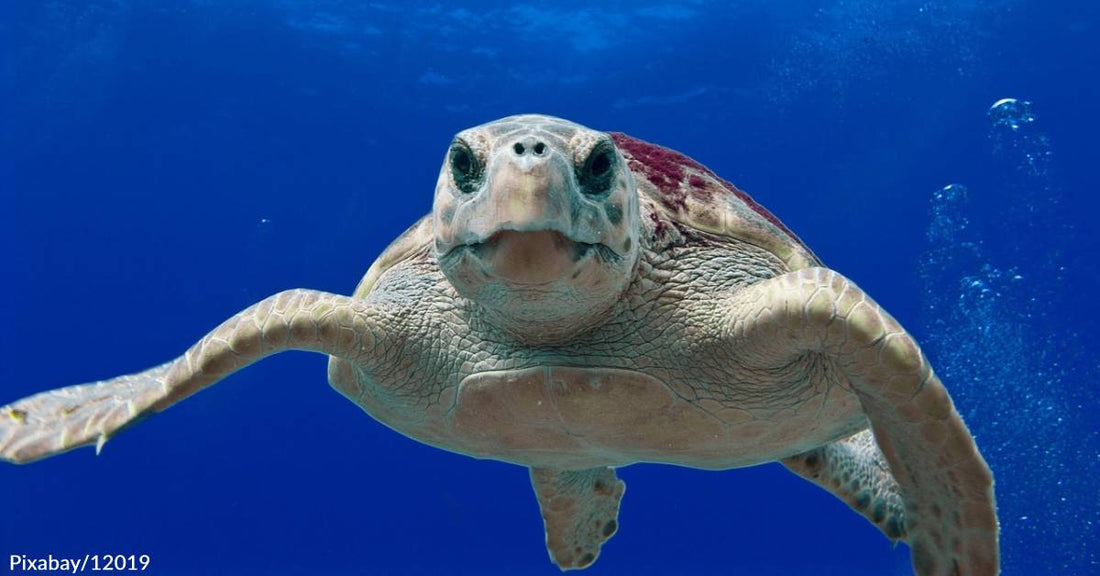Former Turtle Egg Poachers in the Philippines Turn Protectors
Rebecca West
Growing up in the Philippines, construction worker Johnny Manlugay combs the beaches each night for the eggs of sea turtles. He knows exactly what to look for, as he was trained as a child by his grandfather on how to locate the animals and their eggs. Back then, his family traded or ate them. It wasn't about getting rich as much as it was just a part of life.
Endangered Sea Turtles
Manlugay has since turned over a new leaf. Instead, he uses his tracking skills to protect the marine turtles that visit the beaches he lives by. Situated in the northern province of La Union, the beaches there are frequented by several turtle species, including Hawksbill, Loggerhead, Leatherback, Green, and Olive Ridley. All five dig nests there, and all five are endangered.
"I've learned to love this work," Manlugay acknowledged in a Reuters interview. "We didn't know poaching was illegal and that we should not eat turtle eggs and meat."
Saving Marine Life
Manlugay delicately transferred each egg into a pail he brought with him, as well as some sand from the turtle nests, to be handed over to Coastal Underwater Resource Management Actions (CURMA), the group spearheading the conservation program on the beaches.
Routinely killed for their eggs, meat, and shells, the "pawikan," as they are called, also face other serious threats from things like hunting, habitat loss, trading, and climate change.
Established in 2009, the CURMA conservation effort has gradually transformed marine turtle poachers into valuable allies. They manage this by offering incentives and training to ultimately save thousands of turtles and keep their eggs from ending up everywhere but their nests.
"We talked to the poachers, and it turned out poaching was just another means for them to earn a living," explained Carlos Tamayo, the director of operations. "They had no choice."
Sea Turtle Conservation Programs
On average, sea turtles lay 100 eggs in a nest. The number of nests in the area ranges between 35 and 40 each season, which runs from October to February. Tamayo noted that the figures had doubled during year one of the COVID pandemic. "Last season alone, for example, we had 75 nests and we released close to 9,000 hatchlings," he shared.
The program is volunteer-based, but those involved receive 20 pesos ($0.37) for each egg collected, which is four times what they would earn from selling them, so it's easy to see why the project is making a dent.
Making a Difference
Once collected, the eggs are then transferred to CURMA's hatchery to be reburied in protected areas. Another former poacher, Jessie Cabagbag, grew up eating turtle meat and eggs like many people there. He stated that the extra income from egg collection has gone a long way for his family, who rely mainly on fishing for their income.
"The incentives help us pay for our food and electricity bill. When I got lucky, I was able to save and use it to buy a tricycle, which I use (for ferrying passengers) when I could not go out to fish, so that's another source of income," he said.
Turtle Nesting Season
Cabagbag's wife and young son accompany him in patrolling the La Union beach of Bacnotan, where they have collected more than 1,000 eggs to give to CURMA since October. "I stopped poaching when we underwent training and were taught that what we have been doing was illegal and that these species of turtles are endangered," he explained. Now, he admits, "I am truly proud. Even our neighbors, they appreciate what I do, because it is not easy. I am happy that I get to contribute to the conservation of the pawikan."






